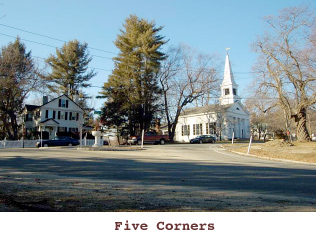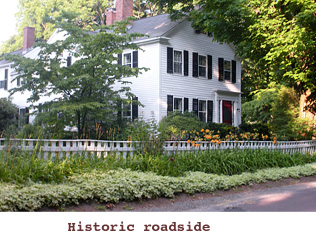Historic ROadside Guidelines
The landscape along Lincoln’s historic roadways is a partnership between the bordering shade trees and the adjacent properties including older/ historic houses, churches, or civic buildings. This shared landscape has evolved over the centuries with minimal intrusion of “suburban” qualities such as screen fences, non-native plant materials, or overly-crafted stone walls. As a general rule, maintaining a simple landscape with modest lawns, native shade and flowering trees, and well-placed perennial gardens should be the guide for the future along Lincoln's historic roadsides.
Overhead utility lines create the same dilemmas for historic roadsides as they do in other categories. However, the conflict between utility lines and visual quality is more pronounced than any other category given both the openness of the landscape and the presence of significant historic buildings. Placing overhead utilities underground within the historic roadway segments should remain a long-term goal of the Town as roads are rebuilt or renovated. In such projects, trees and stone walls need to be protected during and after construction.
Roadways through the Town’s historic center are more often accompanied by walkway/bike paths, curbs, crosswalks, and traffic control signage. While these are necessary, especially with increasing traffic volumes, their frequency and detailed design should be subject to the same review as that associated with historic building maintenance or modification.


![]() To identify your road type, see Roadside Types definitions and Roadsides types map
To identify your road type, see Roadside Types definitions and Roadsides types map
![]() For a complete list of guidelines, see the Lincoln Roadside Report, pp. 18 - 38
For a complete list of guidelines, see the Lincoln Roadside Report, pp. 18 - 38


